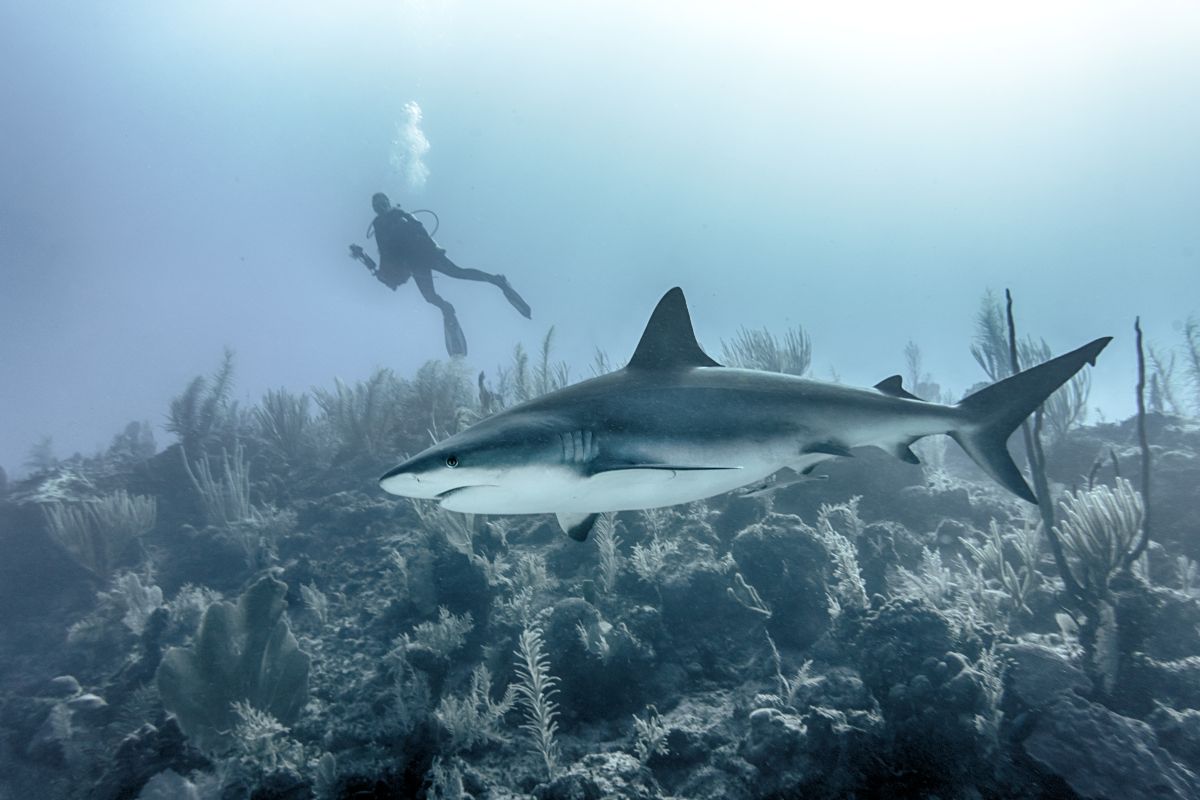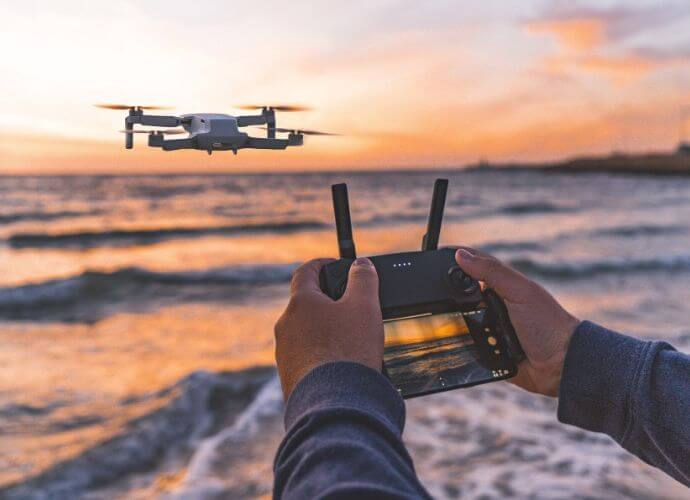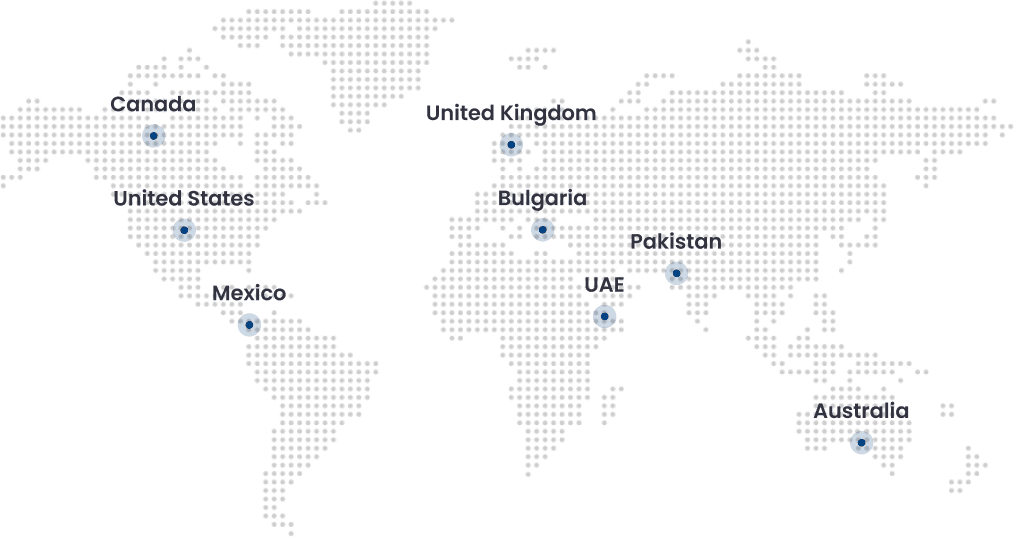AI shark detection drones are transfiguring marine safety for commercial fishing fleets, offshore platforms, and maritime operations by providing real-time threat assessment and crew protection. These intelligent systems utilize computer vision, shark detection, and YOLOv8 object detection algorithms to monitor waters around vessels, oil rigs, and fishing grounds with 90% accuracy.
With the advancement of shark detection AI technology, drone-based shark spotting has become essential for marine companies seeking to protect personnel, reduce insurance costs, and maintain operational safety. These systems maintain stringent safety standards through comprehensive AI-powered marine surveillance that safeguards both human assets and valuable equipment.
How do shark detection drones work?
Modern maritime shark detection systems integrate sophisticated drone surveillance technology with neural network-based marine life classification to create thorough monitoring solutions for commercial marine operations.
Vessel-deployed surveillance systems
Marine companies deploy ship-mounted drones with 4K cameras that launch automatically from fishing vessels, offshore platforms, and research ships, providing 360-degree perimeter monitoring around high-value maritime assets and crew operations.
Real-time fleet communication integration
AI-powered image analysis connects directly to vessel communication systems, bridge displays, and fleet management software, enabling instant shark alerts across entire fishing fleets and coordinated response protocols for crew safety. Advanced machine learning algorithms process multiple data streams simultaneously to ensure comprehensive coverage of maritime safety.
Deep water detection capabilities
Advanced computer vision algorithms can detect sharks at depths of up to 15 meters in clear waters, providing early warning systems for diving operations, underwater maintenance, and fishing activities in areas populated by sharks.
Commercial fishing zone monitoring
Automated shark recognition systems continuously scan fishing grounds, crab trap areas, and net deployment zones, alerting crews to the presence of predators that could threaten personnel or damage expensive fishing equipment and catch.
Offshore platform perimeter security
Oil rigs, wind farms, and marine construction sites utilize drone-based shark spotting to protect maintenance divers, underwater welders, and marine technicians working in potentially dangerous waters around industrial infrastructure.
Real-time classification powered by AI

Machine learning marine safety systems leverage sophisticated neural networks trained specifically on commercial marine environments to protect valuable fishing operations and offshore work crews.
Commercial species threat assessment
YOLOv8 object detection frameworks identify high-risk species, including great whites, bull sharks, and tiger sharks, while distinguishing them from commercially valuable fish species. These AI development services prevent false alarms during fishing operations, enabling precise species classification that protects both crew safety and operational efficiency.
Fishing ground risk analytics
Advanced AI algorithms analyze historical shark presence data, water temperature, seasonal migration patterns, and bait fish concentrations to predict high-risk zones. This enables commercial fishing vessels to implement detailed crew safety planning and avoid dangerous areas during peak predator activity periods.
Real-time equipment protection alerts
Neural networks in marine life systems enable the detection of sharks approaching expensive fishing nets, crab traps, and underwater equipment with precision accuracy. These alerts enable crews to retrieve gear before costly damage occurs from predator interactions, protecting valuable maritime assets and maintaining operational profitability.
Crew overboard emergency response
Machine learning algorithms instantly detect human presence in water during emergencies while simultaneously scanning for nearby sharks. This dual-detection capability enables safe rescue operations and medical evacuation procedures for fishing crews in potentially hazardous waters populated by predators.
Multi-vessel fleet coordination
Integrated AI systems share real-time shark identification data across entire fishing fleets, enabling coordinated avoidance strategies and optimized selection of fishing grounds. Fleet managers utilize current predator activity levels and crew safety requirements to maximize operational efficiency while minimizing personnel risk exposure.
Benefits of AI shark detection drones
Automated shark recognition systems deliver critical operational advantages for marine companies, reducing insurance costs, protecting valuable crew members, and maintaining profitable fishing operations through advanced safety protocols.
- Commercial fishing companies utilizing drone surveillance technology qualify for 25-40% reduced maritime insurance rates.
- Real-time shark identification prevents work stoppages and medical incidents that cost fishing operations thousands of dollars daily.
- AI-powered marine surveillance prevents shark damage to expensive nets, traps, and underwater equipment.
- Maritime insurers are increasingly requiring safety systems for coverage approval, making shark detection drones essential for maintaining operational licenses.
- Fishing companies with advanced safety systems secure more lucrative contracts from oil companies, research institutions, and government agencies.
Global deployments & use cases
According to IBISWorld’s 2024 industry report, AI shark detection drones protect commercial marine operations across the United States, where the fishing industry generates $5.9 billion annually.
- Major Gulf Coast fishing companies deploy advanced drone-based shark spotting systems across shrimp, red snapper, and grouper operations, resulting in a 25% reduction in crew insurance costs.
- Washington and Oregon commercial salmon operations utilize computer vision-based shark detection to protect valuable fishing crews during peak season operations.
- Maine and Massachusetts lobster boats are implementing AI-powered marine surveillance to protect divers and crew during trap maintenance operations.
Folio3 is your best marine industry tech partner
Folio3 delivers specialized AI drone solutions designed for commercial marine operations, protecting fishing fleets, offshore platforms, and maritime crews through cutting-edge computer vision systems for shark detection.
- Our expert team creates custom machine learning models optimized for commercial fishing environments with comprehensive crew protection protocols.
- We provide complete system integration for fishing vessels and offshore platforms, ensuring seamless operation with existing maritime equipment.
- Our AI development services include cloud-based platforms enabling shore-based managers to track shark activity and optimize operations.
- Folio3 designs drone surveillance technology meeting maritime insurance requirements, helping companies reduce premiums while maintaining operational licenses.
- We provide round-the-clock system monitoring, emergency technical support, and rapid deployment services for remote maritime operations.
Frequently asked questions
How do shark detection drones benefit commercial fishing operations?
AI shark detection drones protect fishing crews, prevent equipment damage, and reduce insurance costs for commercial operations. These systems minimize operational downtime by providing early warning capabilities that enable proactive safety measures in areas with shark populations.
Can these systems integrate with existing vessel communication equipment?
Yes, modern drone surveillance technology seamlessly integrates with ship communication systems, bridge displays, and fleet management software. These systems ensure comprehensive crew safety coordination across entire fishing operations through existing maritime communication protocols.
What’s the ROI for marine companies investing in shark detection technology?
Commercial fishing companies typically see 25-40% reduced insurance premiums and 60% fewer safety-related work stoppages annually. Full return on investment is typically achieved within 18-24 months through reduced costs and improved operational efficiency.
Do maritime insurers recognize shark detection systems for premium discounts?
Yes, major maritime insurers increasingly offer premium reductions for vessels equipped with certified AI shark detection systems. These discounts recognize the systems’ effectiveness in reducing crew incidents and minimizing expensive equipment damage claims.
How reliable are these systems in commercial fishing environments?
Marine-grade shark detection drones achieve 90-95% accuracy in commercial fishing conditions across varying weather and sea states. These systems operate effectively around fishing equipment while maintaining continuous monitoring capabilities during all active fishing operations.

Laraib Malik is a passionate content writer specializing in AI, machine learning, and technology sectors. She creates authoritative, entity-based content for various websites, helping businesses develop E-E-A-T compliant materials with AEO and GEO optimization that meet industry standards and achieve maximum visibility across traditional and AI-powered search platforms.









